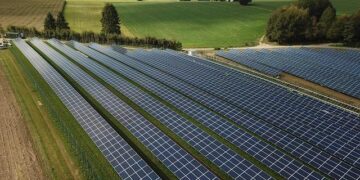The
has been one of the world’s most tragic and longstanding conflicts.
Now, the conflict
, with over 2,000 people killed in recent days, thousands injured, and dozens reportedly taken captive.
Tensions escalated after militant group
launched a coordinated land, sea and air attack against Israel.
But when did the long-running conflict start, and what is it all about?
How did the Israel-Palestinian conflict start?
The roots go back to what are regarded as ‘Biblical times’, but from a modern historical perspective, the late 1800s and early 1900s were central to the situation that exists now.
Between 1882 and 1948 a series of Aliyahs took place, during which Jews relocated from around the world to from around the world to the area which became known as Palestine.
In 1917, shortly before Britain became the colonial power in Palestine, it issued the Balfour Declaration, declaring support for Palestine as a national home for the Jewish people.
Palestinians did not accept the terms that would have seen the territory under international administration, and part under British rule, but the push for a Jewish state was strong.
In 1947, the United Nations adopted Resolution 191 and voted to split the contested territory into Arab and Jewish states, but the Arabs did not accept the deal and then war broke out.
The bloody 1948 Arab–Israeli War saw 700,000 Palestinians flee their homes – a mass exodus known as the ‘Nakba’, Arabic for ‘catastrophe’.
The war saw 700,000 Palestinians displaced in a mass exodus and Israel gained control of most of the disputed territory, with the exception of the West Bank and Gaza Strip.
The West Bank was controlled by Jordan, while the Gaza Strip was controlled by Egypt.
In 1967, the Six-Day War took place and Israel gained control of the West Bank and the Gaza Strip.
The Camp David Accord peace treaty, which was signed in 1979, improved relations between Israel and its neighbours, but the question of Palestinian self-determination and self-governance remained.
In 1993 and 1995, the Oslo I and Oslo II Accords established a framework for Palestinian self-governance in Gaza and the West Bank, and for the Palestine Liberation Organization (the PLO) to be recognised as the legitimate representative of the Palestinian people.
In 2000, Palestinians launched the second intifada (uprising) which lasted until 2005 and led to thousands of casualties.
One casualty was Gaza International Airport, a symbol of thwarted Palestinian hopes for economic independence and the Palestinians’ only direct link to the outside world that was not controlled by Israel or Egypt. Opened in 1998, Israel deemed it a security threat and destroyed its radar antenna and runway a few months after the 11 September 2001 attacks on the United States.
Another casualty was Gaza’s fishing industry, a source of income for tens of thousands. Gaza’s fishing zone was reduced by Israel, a restriction it said was necessary to stop boats smuggling weapons.
The Israelis retreated from Gaza, and in 2006, Hamas won the Palestinian Authority’s parliamentary elections.
Much of the international community cut aid to the Palestinians in Hamas-controlled areas because they regarded Hamas as a terrorist organization.
Israel stopped tens of thousands of Palestinian workers from entering the country, cutting off an important source of income. Israeli air strikes crippled Gaza’s only electrical power plant, causing widespread blackouts. Citing security concerns, Israel and Egypt also imposed tighter restrictions on the movement of people and goods through the Gaza crossings.
In 2008, Israel launched a 22-day military offensive in Gaza after Palestinians fired rockets at the southern Israeli town of Sderot. About 1,400 Palestinians and 13 Israelis were reported dead before a ceasefire was agreed.
In 2014, following the kidnap and killing of three Israeli teenagers by Hamas, a seven-week war broke out, in which more than 2,100 Palestinians were reported killed in Gaza and 73 Israelis were reported dead, 67 of them military.
In 2018, fighting again broke out at Gaza’s border and more than 170 Palestinians were reportedly killed over several months of protests.
Tensions again flared up in 2021 during the holy Muslim month of Ramadan, with hundreds of Palestinians wounded in clashes with Israeli security forces at the Al-Aqsa compound in Jerusalem, one of Islam’s holiest sites.
Fighting went on for 11 days, killing at least 250 people in Gaza and 13 in Israel.
In 2022, at least 44 people were killed in three days of violence that began when Israeli air strikes hit a senior Islamic Jihad commander.
What happened in October 2023?
On 7 October, Hamas militants launched a coordinated land, sea and air attack, killing around 700 Israelis and abducting dozens.
Hamas said the attack was driven by what it called escalated Israeli attacks on Palestinians in the West Bank, Jerusalem and against Palestinians in Israeli prisons.
The assault, the worst breach in Israel’s defences in 50 years, followed two years of subterfuge by Hamas that involved keeping its military plans under wraps and convincing Israel it did not want a fight.
While Israel was led to believe it was containing a war-weary Hamas by providing economic incentives to Gazan workers, the group’s fighters were being trained and drilled, often in plain sight, a source close to Hamas said.
“Hamas used an unprecedented intelligence tactic to mislead Israel over the last months, by giving a public impression that it was not willing to go into a fight or confrontation with Israel while preparing for this massive operation,” the source said.
Israel concedes it was caught off guard by an attack timed to coincide with the Jewish Sabbath and a religious holiday.
Israel has killed hundreds of Palestinians in its retaliation on Gaza since then.
“This is our 9/11,” said Major Nir Dinar, spokesperson for the Israeli Defence Forces.
“They surprised us and they came fast from many spots – both from the air and the ground and the sea.”
Israel’s Prime Minister Benjamin Netanyahu has said his country was embarking on a “long and difficult war” in response, and vowed a “mighty vengeance”.
The country’s cabinet approved the cutting of electricity, fuel and goods in Gaza.
Israeli air strikes have hit housing blocks, tunnels, a mosque and homes of Hamas officials in Gaza, killing hundreds of people.
Palestinian fighters took dozens of hostages to Gaza, including soldiers and civilians, children and the elderly. A second Palestinian militant group, Islamic Jihad, said it was holding more than 30 of the captives.
What is the group Hamas?
The significant escalation is the latest in a long-standing conflict between Hamas and Israel.
Hamas is a Palestinian military and political group, gaining power in the Gaza Strip since winning legislative elections there in 2006.
Hamas’ stated aim is to establish a Palestinian state, while refusing to recognise Israel’s right to exist.
Hamas, in its entirety, is designated as a terrorist organisation by countries including Australia, Canada, the UK and the US.
Some countries list only its military wing as a terrorist group.
The UN though did not condemn Hamas in its entirety as a terrorist organisation, due to insufficient support from member states to do so during a 2018 vote.
What is Australia’s stance?
The Australian government expressed support for Israel after the attacks by Hamas.
Prime Minister Anthony Albanese described Hamas’s actions as “indiscriminate and abhorrent”.
Albanese said Australia recognises Israel’s “right to defend itself”.
In July, Australia issued a joint statement with Britain and Canada calling on Israel’s government to reverse a decision to approve new settlement units in the West Bank, saying they were “deeply concerned” by an ongoing cycle of violence.
The statement came after Israel approved more than 5,700 new settlement units in the West Bank and instituted changes to the settlement approval process which facilitate swifter approval of construction.
Settlements are considered illegal under international law by many countries.
At the time, Albanese said Australia, “understood the need for a peaceful resolution”.
“Together with other partners, including the UK and Canada, we understand that the need for a peaceful resolution in the Middle East between Israelis and Palestinians requires a settlement between the Israeli and Palestinian leadership,” he said.
“We also understand that settlements in Palestinian territories make that more difficult. I want to see the right of Israelis and Palestinians to live in peace behind secure borders. And we need to ensure that any action doesn’t undermine that but assists that.”
In August, the Australian government announced it would
to describe the territories in the West Bank and Gaza that Israel occupied in 1967.
The move strengthened the government’s objection to the settlements, and was welcomed by Palestinian groups in Australia.
–Additional reporting by AAP
>>> Read full article>>>
Copyright for syndicated content belongs to the linked Source : SBS – https://www.sbs.com.au/news/article/the-israeli-palestinian-conflict-explained/kzuibqf33































